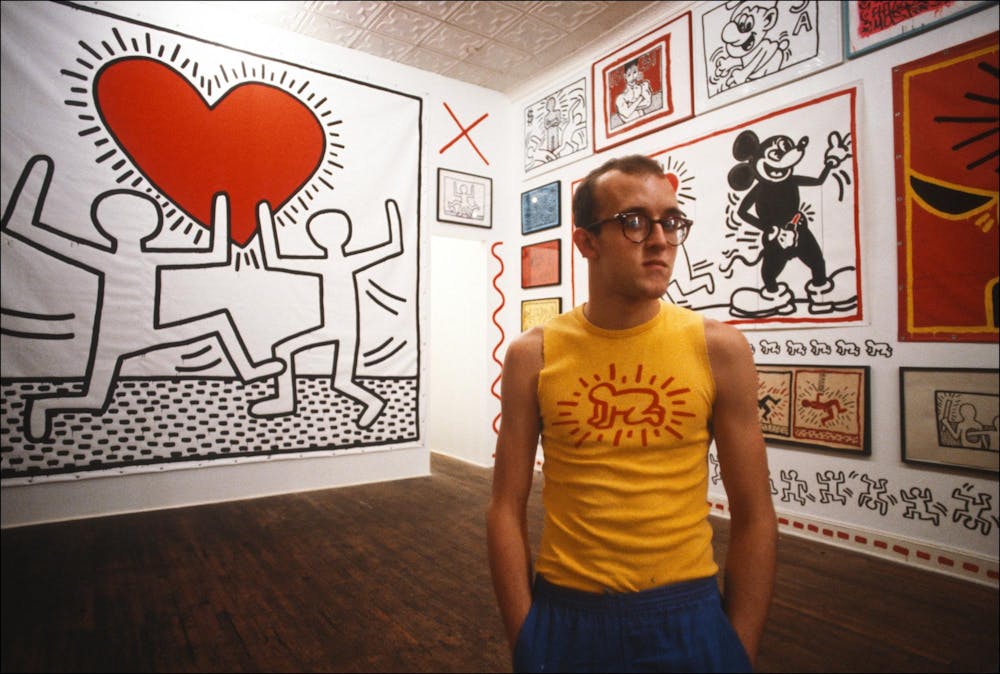An exhibit at the Columbia Museum of Art featuring artworks from renowned contemporary artist Keith Haring opened in September. The exhibition, titled "Keith Haring: Radiant Vision," is on display beginning Sept. 27, 2025, at the Columbia Museum of Art.
Keith Haring was a prominent figure in New York City's art scene in the 1980s and was later recognized globally for his artwork. His artistic expression began as graffiti, and he created murals that reflected his philosophy that art is for the public and should be accessible to everyone. Haring’s artwork used semiotics — the study of signs and symbols and their interpretation — to create bold, iconic images that are widely recognizable. He died at age 31 from AIDS-related complications. The exhibit puts his life's work on display and invites visitors to celebrate his life and revolutionary art. It is a traveling exhibit from PAN Art Connections.
Haring’s iconic images, born from New York City subway stations, now carry an artistic legacy that shines through each of his pieces. His early works were created with chalk on panels in subway stations across the city. Haring’s lively, stylized figures, from dancing people to barking dogs, remain a defining part of contemporary art history. His identity played an important role in his work, as he was an openly gay artist who raised awareness about the AIDS epidemic and introduced new ways to discuss stigmatized social issues. Haring is remembered for his activism, as he used his art to raise awareness and speak about other social and political issues such as illegal drugs and the end of apartheid.
The exhibit highlights several important aspects of Haring's career. The first section centers on his early work, showcasing the subway drawings he created at the beginning of his artistic career.
Sadé Ayorinde, one of the curators at the Columbia Museum of Art, said the opening section of the exhibit "highlights his sort of early time in New York and his attempt at trying to develop this sort of later recognizable style that everybody knows."
Walking through the exhibit offers visitors a glimpse into Haring's life and a deeper look at his artwork. "I think that's kind of a cool experience to sort of start that journey with the artist in that first gallery," Ayorinde said.
It's astonishing to see how Haring’s work ranges from graffiti to large-scale paintings and prints. The exhibit features a wide selection of his artworks, showcasing the depth and diversity of his career. One of the pieces on display, titled "Apocalypse," was created in collaboration with postmodern writer and artist William S. Burroughs. The work pairs Burroughs’ text with Haring’s visual interpretation, using symbols to explore themes of consumerism, religion and sexuality. Through bold symbolism and collage techniques, Haring brings Burroughs’ prose vividly to life.
Several of the pieces on display at the Columbia Museum of Art reflect Haring’s activism and engagement with social issues, including a collection of three pieces titled "Free South Africa," created in 1985 to support the end of apartheid. Another socially conscious work, "Crack Down," is a poster designed to raise awareness about the crack epidemic of the 1980s.
The final section of the exhibit features memorabilia and artworks from Haring’s Pop Shop, a store that sold affordable art and merchandise, embodying his belief that art should be accessible to everyone.
"I think that the last gallery is important as well, because again, it's sort of the last signal within the exhibition of his large desire that people should be able to have artwork if they want to," Ayorinde said.
The impact of Haring’s art remains deeply relevant in the art community, and his legacy is being celebrated in Columbia, South Carolina. Engaging with his work demonstrates how artistic expression can be a powerful tool for addressing societal issues and fostering a sense of community.
Haring’s legacy continues through the Keith Haring Foundation, which supports nonprofit organizations that assist children and provide education, prevention and care related to HIV/AIDS.
"Keith Haring: Radiant Vision" will be on display at the Columbia Museum of Art from Sept. 27, 2025, through Feb. 15, 2026. The museum will also host several public tours and events during the exhibition’s run. Visitors can view the exhibit for free during the museum’s Free First Thursdays program, held on the first Thursday of each month.



